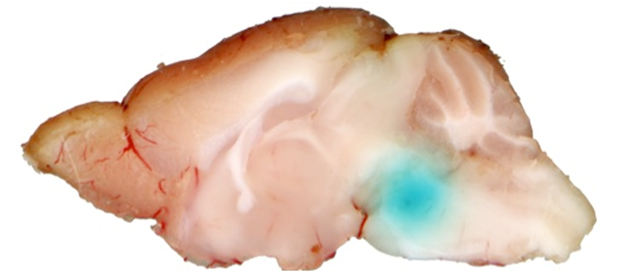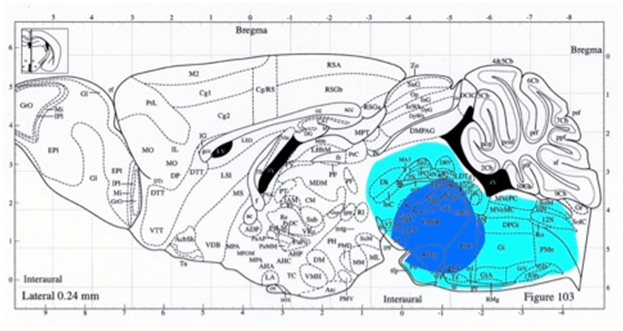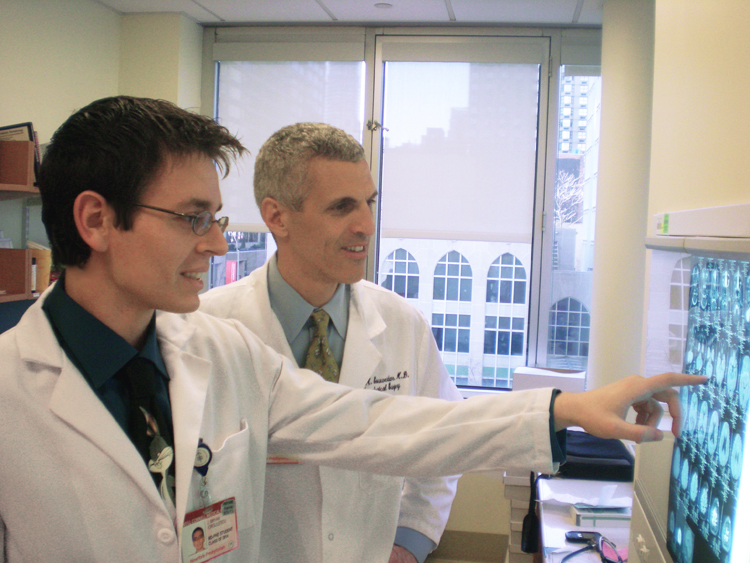PI: J. Bryan Iorgulescu, Weill Cornell Medical College, 2011-2012
I have a deep-seated passion for pediatric neuro-oncology research and wish to pursue a career where I can directly fight children’s brain cancers – & hopefully one day, help find a cure. Delving into this project along side my medical school studies at Weill Cornell Medical College has helped me gain an appreciation for translating lab research to treatments for patients, a much deeper understanding of the inner-workings of children’s brain cancers, & a framework for how to dismantle the problems posed by diseases to then design treatments to combat them.
Project Summary:
Diffuse intrinsic pontine glioma is a devastating & incurable brain tumor in children. Even with our best treatments, average survival falls short of just one year. This is because the brain has a protective barrier that prevents most chemotherapeutic agents or drugs from reaching the tumor, which is located in a part of the brain that is difficult to operate on or treat with radiation.
When faced with any disease, your body fights back with an immune response. In my project I am using an exciting new approach that directly delivers part of this immune response to the tumor. I’ll inject an antibody (named 8H9) that only targets a unique protein on the surface of brain tumor cells, while ignoring normal cells (Fig. 1). Attached to our antibody is a radioisotope of iodine that emits a miniscule radius of radiation. This radiation is normally too small & weak to affect normal tissues, but specifically kills only cancer cells when concentrated on the tumor by 8H9’s targeting. Our lab & collaborators have already used radiolabeled 8H9 to safely treat another fatal type of brain cancer in children (Neuroblastoma metastases to the brain) – with very promising results!
By treating new genetically-engineered mice that have these brain tumors with radiolabeled 8H9, I can optimize the delivery & dosage for our upcoming clinical trial in children. The mouse brain is about the size of a jelly bean, so targeting the appropriate brain area requires extreme precision. I have been practicing on over a dozen mice to perfect the delivery technique (Fig. 2). I will also study how exactly the tumor cells respond to 8H9. This will ensure that we can design the safest & most effective treatment for these children suffering from diffuse intrinsic pontine gliomas. While we await additional 8H9 antibody, we have expanded our project to begin looking at chemotherapeutic drugs already approved by the FDA to treat brain cancer. Because the brain’s protective barrier prevents many of these drugs from being effective, our direct-delivery approach should drastically improve their tumor-fighting abilities.
How will this project ultimately affect kids with cancer?
The brain has a protective barrier that prevents most cancer-treating drugs from getting to the tumor. Our direct-delivery approach lets us bypass that protective barrier & safely deliver a wide spectrum of effective drugs directly to the brain tumor, drastically improving their abilities to fight brain tumors in kids.
What is most exciting is that the 8H9 antibody can target a wide variety of cancers, including several adult cancers, so this project has the potential to provide the foundation for many future treatments. Radiolabeled 8H9 is already showing promising results in clinical trials of children with another fatal type of brain cancer – Neuroblastoma metastases. Our lab is currently preparing to start a new clinical trial to investigate direct-delivery of radiolabeled 8H9 to children suffering from pontine gliomas.
A description of the project for kids to understand:
Very rarely, some little boys & girls get a small sickness inside their heads called a glioma – kind of like a tiny fire that makes it hard to think. Just like fire trucks, we spray special water from a little hose & put out the fire. This water only affects fire while leaving everything else okay – helping to make the sickness go away!
A thank you to the CBTF & its sponsors:
Thank you so much for your support! Your efforts to fight kids’ cancers are truly inspirational – & without which my research to find new treatments for children’s brain tumors would not have been possible. I hope that together we can help to soon discover cures for kids suffering from these devastating brain cancers.
Figure 1:

These are across-the-brain slices showing Normal Brain cells (in purple) & the cells that the 8H9 antibody targets (in brown). The slices on the right have the purple removed to reveal just the brown – showing that 8H9 only targets Tumor cells, while leaving Normal Brain cells alone.
Figure 2:

This is a down-the-middle brain slice showing the precise drug delivery (in blue) to the brain area that is affected by pontine gliomas: the brainstem. Underneath is the associated mouse brain map: light blue represents the brainstem, while dark blue depicts the precisely delivered drug.

